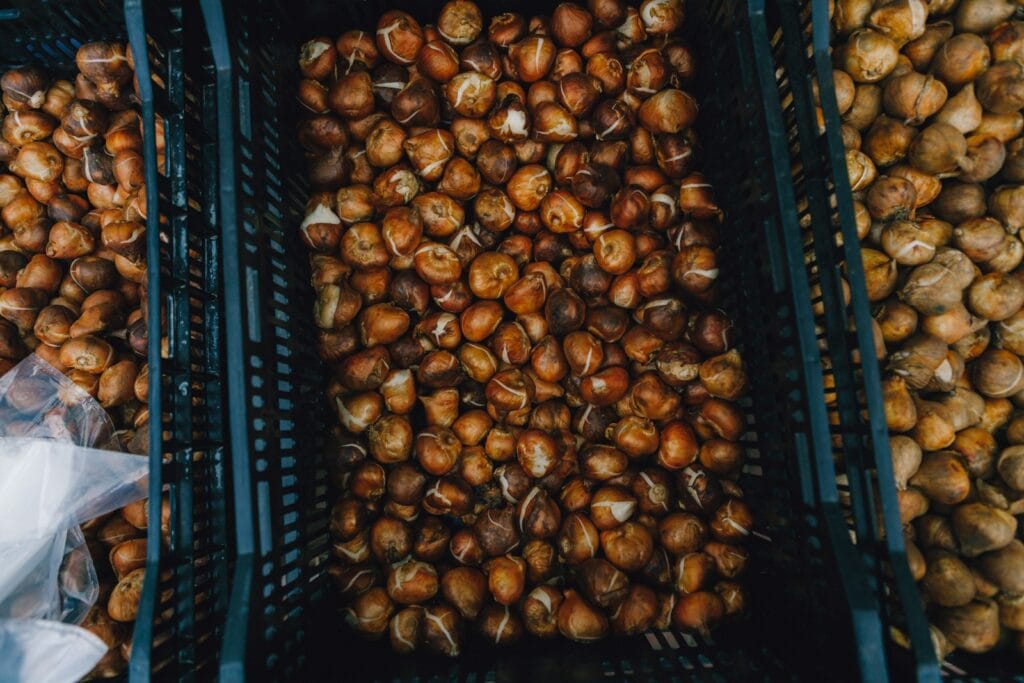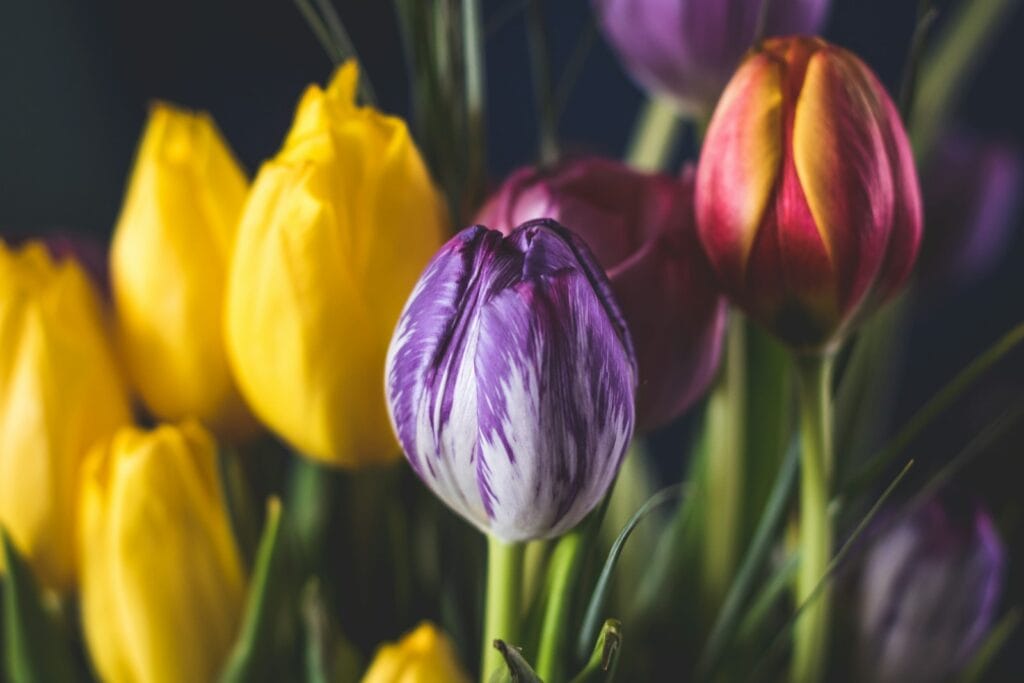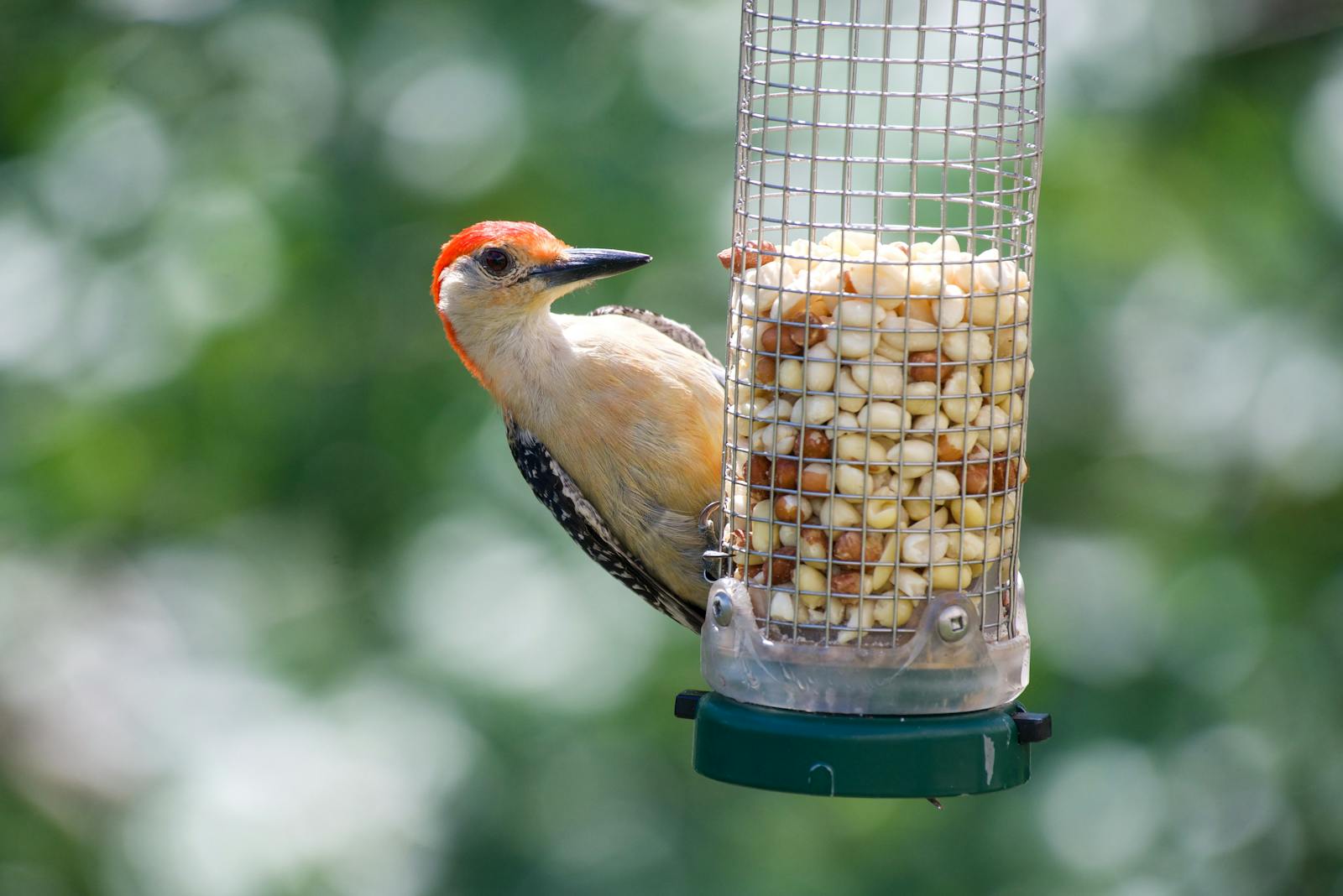
Are Tulips Perennials? A Quick Hack on Long-Blooming Spring Flowers
Tulips announce spring with their colourful petals, bursting forth as harbingers of the new season. As the last frosts relinquish their grip, tulip bulbs underground sense the warming earth and send up green shoots that unfurl into a dazzling floral display. From early spring to late spring, tulips bloom in a progression, with early varieties like the apricot Parrot’ emerging first, followed by midseason bloomers like ‘Queen of the Night’, and finally, late types like ‘Fringed Elegance’. This sequence ensures an ongoing show of tulips from the first breath of spring through the transition to summer.
While many tulips bloom vigorously for one season before going dormant, some varieties exhibit perennial tendencies and will return reliably for decades. Darwin Hybrid tulips and species tulips like Tulipa kaufmanniana and Tulipa tarda are excellent choices for perennial tulips. They multiply steadily each year, producing more bulbs and flowers annually. To keep tulips performing their best, plant the bulbs in a sunny spot with well-drained soil. Allow the foliage to die back completely after blooming rather than cutting it off so the bulbs can store energy for next year’s flowers. With the right tulip varieties selected and proper care provided, these bulbs will delight for years to come as an enduring harbinger of spring.
Are tulips perennials or annuals?
Did you know that all tulips technically come back year after year? It’s true! But there’s a twist: some tulips are like one-hit wonders, giving it their all in their debut spring before bowing out gracefully. These are the cool kids of the tulip world – the flashy, modern hybrids that steal the show.
Picture this: you plant these beauties in the fall, and come spring, they burst onto the scene with the biggest, brightest blooms you’ve ever seen. It’s like they’re saying, ‘Look at me!’ But here’s the catch – after their big moment, they’re spent. By midsummer, they’re waving goodbye, making way for the next stars of the show.
But fear not! Just when you think the party’s over, it’s time to prep for next year’s spectacle. Out go the old bulbs, in come the new ones, ready to paint the town red – or any color you choose. With a fresh batch of tulips each year, the show never gets old. It’s a yearly tradition that keeps your garden looking fresh and fabulous.
Can You Leave Tulip Bulbs in the Ground all Year Round?

The modern hybrid tulips that fill flower shops and gardens each spring are eye-catching beauties, with lush, vibrant blooms in a stunning array of colours and forms. However, their beauty is fleeting. These hybrids put on a glorious floral display for that first year after planting, but their performance quickly declines. If left in the ground, they may send up a bloom or two the following spring, given ideal growing conditions – dry summer soil to keep bulbs from rotting and plenty of sun. But after a few short years, most will produce only leaves and no flowers at all. Well-known types in this category include:
- The early-blooming singles and doubles.
- The elegant lily-flowering forms.
- The ruffled parrots.
- Triumph and peony-flowered varieties.
While gorgeous that first year, their brief lifespan makes them impractical for permanent plantings. However, several other types of tulips will faithfully re-bloom when planted in an appropriate spot. The species tulips, Greigii tulips, waterlily types, and Darwin hybrids are all known for their ability to return year after year. Provided with well-drained soil that stays dry in summer, these bulbs will reward the gardener with a lasting display. Their flowers may not be as showy as the modern hybrids initially, but their staying power makes them a wise investment for any garden where tulips are desired as a permanent planting.
With a bit of forethought to choose the repeating types, tulips can become a garden fixture to enjoy for many seasons.
How to Get Tulips to Come Back Each Year
Tulip Bulb Planting Tips
When you’re aiming for lush, vibrant tulip blooms, the soil you plant them in is key. Tulips are picky about their digs – they prefer loose, well-drained soil that never gets waterlogged. So, pick a spot that doesn’t get soaked by summer showers or irrigation. This way, when summer rolls around, and the bulbs take a nap, the soil can dry out completely.
Loose, dry soil is like a spa for tulip bulbs – it lets them stretch out their roots nice and deep. And sunlight? They can’t get enough! Give them at least 8 hours of direct sun every day to fuel their growth.
Find a sunny spot for your tulips—a bright flowerbed or garden plot is perfect. And when you’re planting, don’t be shy about the depth. Stick those bulbs 8 to 10 inches deep in the soil to shield them from chilly winter temperatures and keep them from popping up with the changing seasons.
Come autumn, prep the soil just right and give your tulips the sunlight they crave. With loose, fast-draining soil, a light touch on the watering, and plenty of sunshine, your tulips will thank you with a spectacular floral show.
Tulip Caring Tips
Tulips, those darlings of spring, are cherished for their dazzling hues and graceful blossoms. Yet, many a gardener faces the challenge of coaxing their tulip bulbs into a repeat performance. The key? Tender loving care throughout the tulip’s yearly cycle.
Once the tulip’s show is over in late spring or early summer, grab your gardening shears and snip off the spent blooms just below the head. This little act redirects the bulb’s energy towards next year’s flower bud rather than squandering it on seed production. Leave the green foliage until it naturally fades and yellows, usually about 4-6 weeks post-bloom. Those leaves are like nature’s pantry, storing up nutrients that’ll fuel next season’s show.
Only trim back the foliage once it’s dry and lifeless, then let the bulb cosy up in the soil over the summer. For an extra boost, sprinkle some 5-10-5 fertilizer around the bulbs fall, again as sprouts start peeking out in early spring and once more when they’re in full bloom in late spring. These nutrients will help bulk up the bulbs, ensuring taller, sturdier flower spikes next time around.
Stick to this regimen of TLC and feeding, and you’ll see your tulip bulbs come back like clockwork, ready to paint the spring landscape with their breathtaking blooms year after year.
The Finest Perennial Tulip Bulbs
When it comes to perennial tulips, the options are as varied as the colours of the rainbow. From towering blooms to delicate ground-huggers, there’s a tulip for every garden vibe. But which ones are the best fit for your patch of earth? Let’s take a look.
For a classic statement, you can’t go wrong with traditional tulips. These sturdy stems reach up to 24 inches, boasting vibrant, cup-shaped flowers in shades of crimson, pink, yellow, and purple. Planted in beds or borders, they’re like fireworks in springtime.
If subtlety is more your style, consider rock garden tulips. These little charmers stand just 4-6 inches tall and have dainty pastel blooms that create a soft, elegant carpet when planted en masse.
For a touch of the wild, go for species tulips like Tulipa kaufmanniana. Their pointed petals and natural hues of red and yellow lend a rustic, untamed vibe to any garden. Plus, they spread effortlessly year after year, giving you a perennial display without the fuss.
When picking your perennial tulip bulbs, look for varieties labeled as good perennials. Be sure to give them plenty of sunlight and well-drained soil. With the right care, these beauties will grace your garden with their cheerful blooms season after season, spreading joy and colour wherever they go.
Majesty of Darwin Hybrid Tulips

With their towering stature and magnificent, chalice-like blossoms, Darwin hybrid tulips command attention like no other. While no tulip can promise eternal returns, Darwin hybrids have earned their stripes as dependable perennials – if you treat them right.
These giants of the tulip world need a solid foundation. Plant their hefty bulbs 8 to 10 inches deep, ensuring their foliage can stretch to a majestic 18 to 26 inches come springtime. This depth not only keeps them firmly rooted but shields the bulb from temperature swings that could spell trouble.
Come May, prepare to be amazed as colossal blooms, up to 5 inches wide, burst forth in a symphony of colours – crimson, pink, purple, yellow, and white, sometimes with striking contrasts at their centres or edges. But resist the temptation to snip these wonders for indoor arrangements; it’ll only drain the bulb’s energy and dampen its chances of an encore. Instead, reserve a special spot for tulips destined solely for the vase.
Let your Darwin hybrids mature naturally on the plant, soaking up the sun and feeding the bulb for next year’s grand spectacle. With a little TLC, these hybrids will grace your garden with their vibrant splendour year after year, painting the landscape with a fresh burst of colour each spring.
Charm of Waterlily Tulips

Springtime brings a burst of joy to gardens with the arrival of waterlily tulips. Their vibrant hues and captivating shape make them a true delight to behold. Picture this: low-growing blooms with petals that gently unfurl, resembling dazzling stars against the backdrop of your garden.
Known formally as Kaufmanniana tulips, after the brilliant German botanist who first nurtured them, waterlily tulips stand at a modest 8 to 10 inches tall. Their petite stature makes them perfect for lining borders, nestling into rock gardens, or adding a pop of colour wherever needed.
But it’s their two-tone blooms that steal the show, boasting shades ranging from pristine white to bold red, often with captivating striped patterns. And let’s not forget their leaves – gracefully speckled in hues of green, purple, and silver, they perfectly complement the blooms.
As these charming tulips fully blossom, their petals gracefully arch backward, revealing sunny yellow centres reminiscent of their aquatic namesake. Early risers in the springtime, they emerge as some of the first blooms after winter’s long slumber, bringing a much-needed splash of color to the garden.
Plant your waterlily tulip bulbs in the fall for a stellar floral spectacle in April and May. With their compact size and vivid palette, these beauties are sure to brighten up any spring landscape, painting it with nature’s masterpiece.
Vibrance of Greigii Tulips

In the realm of spring gardens, Greigii tulips reign supreme as vibrant showstoppers. Renowned not only for their radiant blooms but also for their stunningly patterned foliage, these tulips are a true sight to behold.
Picture this: leaves that emerge with a base of bluish-green, adorned with an intricate tapestry of burgundy stripes, spots, and scars. Each leaf tells its own colourful story, creating a whimsical patchwork of pigmentation that captivates the eye. With their ruffled edges and subtle sheen, the foliage dances in the breeze, forming a lush mound that gracefully spills across the ground.
Atop this kaleidoscope of leaves sit the star attractions – cup-shaped blooms in a kaleidoscope of hues: fiery reds, sunny oranges, radiant yellows, delicate pinks, regal purples, and pristine whites. Some varieties even boast frilled edges, adding a touch of elegance to their already dazzling display.
Greigii tulips stand tall at heights ranging from 8 to 20 inches, offering versatility in garden design. The shorter varieties make perfect borders, framing beds and borders with bursts of colour, while the taller selections add drama and flair to containers and garden centres.
Wherever they find a home, Greigii tulips breathe life into the landscape with their unparalleled foliage and cheerful floral showcase. So, why not invite these vibrant wonders to grace your garden and paint your spring with hues of joy and wonder?
Celebrate Spring with Species Tulips
Imagine a garden bursting with a kaleidoscope of colours, where delicate blooms sway in the gentle spring breeze – that’s the magic of species tulips. These charming gems bring a touch of whimsy and a burst of vitality to any landscape, spreading their beauty in breathtaking drifts over time.
Unlike their larger hybrid counterparts, species tulips possess a unique elegance all their own. Take the Tulipa clusiana group, for example, with their slender, grass-like foliage that effortlessly blends into lawns and meadows. Standing at a modest 3 to 15 inches tall, depending on the variety, they may be small in stature, but they’re big on resilience.
These darlings of the garden are known for their steadfast nature as reliable perennials, returning faithfully year after year when given the proper care. To encourage their natural spread, plant the bulbs about 6 inches apart, allowing them the space to multiply and create new bulblets.
With their prolific ability to naturalize, starting with just a handful of bulbs can transform your garden into a vibrant tapestry of colour come springtime. Their cheerful hues and graceful forms illuminate the landscape when most other plants are just beginning to stir.
So, why not give species tulips the spotlight they deserve? Whether lining a walkway or nestled in a flower bed, these enchanting blooms are sure to infuse your garden with charm and grace, heralding the arrival of spring in style.
Wrapping Note: “Are Tulips Perennials?”
As you embrace the beauty of tulips in your garden, you might wonder, “Are tulips perennials?” The answer lies in their diverse nature. While some tulips dazzle for just one season, others, like Darwin hybrids and species tulips, faithfully return, spreading their vibrant hues year after year. With proper care and a touch of patience, your garden can become a perennial paradise, where tulips paint the landscape with their enduring charm and grace. So, as you plant your bulbs and watch them bloom, remember – the magic of tulips is not just in their fleeting beauty but in their promise of perennial joy.





